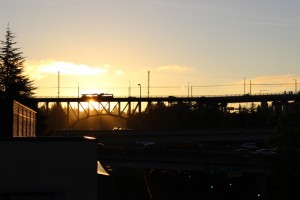PACIFIC NORTHWEST HISTORIANS GUILD EVENT
“The Cultural and Social History of Seattle’s Jose P. Rizal Bridge and its Surroundings”
a presentation by
Andrew Hedden,
UW history graduate student and
Program Coordinator of Harry Bridges Center for Labor Studies
Thursday, January 22, 2015. 6pm.
Beacon Hill Branch of the Seattle Public Library
2821 Beacon Ave. S.
Seattle, WA 98144
Join UW graduate student and Harry Bridges Center for Labor Studies Program Coordinator Andrew Hedden on the history of Seattle’s Jose Rizal Bridge and the culture and history of its surrounding neighborhood.
Built in 1911, Seattle’s Dr. Jose P. Rizal Bridge is well recognized as a historical structure and popular city viewpoint. The oldest standing steel bridge in Washington State, it was added to the US National Registry of Historic Places in 1982. Hedden will outline the lesser-known history of the Rizal Bridge’s central place in the social history of Seattle. Centered between several of the city’s historically immigrant and working class neighborhoods, the bridge and its immediate vicinity have been witness to a series of events, many forgotten, that have markedly shaped the city’s economic, social, cultural, and even physical, landscapes.
Despite being named for Jose Rizal since 1974, the bridge remains known to many by its original and more literal moniker, the 12th Avenue Street Bridge. In fact, the 1982 inventory of the bridge for the National Registry of Historic Places says nothing of Rizal or the local Filipino community. In a 2007 Seattle Times column on the disuse of official bridge names, the WSDOT superintendent of bridges even singled the bridge out as an example of a structure rarely referred to by its official name.
Hedden will trace the history of the bridge and its environs though the massive 1909-1912 Dearborn Street re-grade, led by city engineer R.H. Thomson, which demolished the diverse neighborhood that had grown up there and necessitated the construction of the bridge itself. From there, he will recount the story of the community that emerged following the re-grade, Seattle’s Nihonmachi, or Japantown, which thrived a block north of the bridge prior to World War II. The presentaiton will examine the trials of Seattle’s Filipino community, heavily present to the bridge’s south in Beacon Hill and to the West in the International District. It was their campaign that resulted in the 1974 re-naming of the bridge for Jose Rizal, a Filipino novelist and national hero, and the dedication of an adjacent park to the South in 1981. This story also involves the tragedy of the murders of two young Filipino American labor activists by a respected member of the community, at the behest of the Ferdinand Marcos dictatorship in the Philippines, which occurred only a week prior to the Jose Rizal Park’s dedication.
The presentation will also discuss the broader economic and social contexts of the city as it is reflected in subjects surrounding the Rizal Bridge, from the short life and dramatic death of the Kingdome (which, prior to the bridge’s rechristening, a city official had suggested naming Jose Rizal Stadium!); to the various uses of the Marine Hospital, from military hospital, to public hospital, to headquarters of Amazon.com.
The presentation will also cover the controversial proposal in 2007 of a major shopping mall development on Dearborn Street, in the bridge’s immediate shadow. The project, since canceled, had sparked fears of displacement for Vietnamese members of the area’s newly grown “Little Saigon” – the latest community to call the area surrounding Jose Rizal Bridge “home.”

